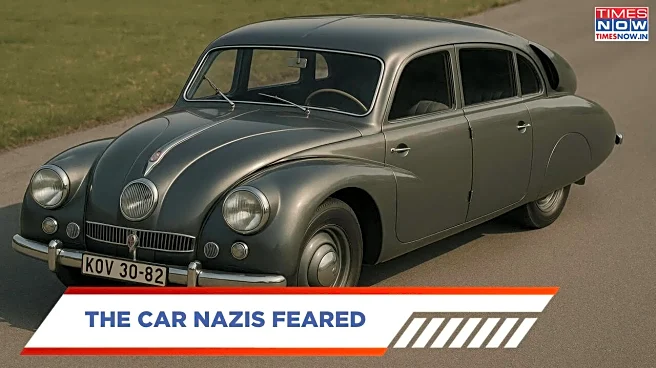The Tatra 87 was a Czechoslovakian sedan from the 1930s that gained notoriety during World War 2. Powered by a rear-mounted, air-cooled V8 engine, this car could rocket to about 160 km/h easily—performance that was more than impressive for staff cars of that era. After Germany occupied Czechoslovakia, Wehrmacht officers were seen driving Tatras everywhere. But due to its rather novel weight distribution, in combination with a swing-axle rear suspension, it was not easy to handle at high speed. For years, there have been reports indicating that hundreds of Nazi officers lost their lives crashing Tatras; the stories came to light post-war and gave the car its grim nickname, “Nazi Killer.” Here’s what we know as facts about the Tatra 87 itself,
its handling characteristics, and evidence that exists to support these popular stories.
Also Read: 2025 Royal Enfield Meteor 350: What’s New & What’s Better
Inside The Tatra 87: Design And Power
Production of the Tatra 87 began in 1936. It featured a 85 hp, 2.9-litre air-cooled V8 engine, mounted over the rear axle. The car's aerodynamic body and backbone chassis gave it unusually high top speed and efficiency. Tatra advertised the 87 as a luxury five-seat fastback, revealing a layout much more advanced than the average staff car of the '30s.
Why Driving The Tatra 87 Was A Risky Affair
The heavy rear engine, swing-axle rear suspension, and stiff chassis induced a peculiar driving experience that could suddenly put the car off balance at high-speed corners. Most drivers who were used to the normal front-engine handling experienced oversteer or simply lost control when they tried to balance at high speeds. These tricky dynamics, along with wartime road conditions and spirited driving on the Autobahn, added up to more crashes for the Tatra, when comparable to other vehicles.
Also Read: Celebrity Cars: All About Malaika Arora's New Range Rover Worth Rs 3 Crore
Tatra 87 Legend vs Documented Facts
Stories that “hundreds” of Nazi officers perished in Tatra vehicles and that Hitler instituted an official ban on these cars are rather common. However, supporting primary documentation is limited. Casualty figures are more anecdotal than verified by statistics, according to what most automotive historians and credible sources have to say about it. The most reasonable conclusion one can draw is that yes, there were fatal accidents induced by Tatra’s design, which allowed it to acquire a formidable reputation during wartime, but the exact death toll remains unverified.
For more such automotive stories, keep reading Times Now Auto.



















